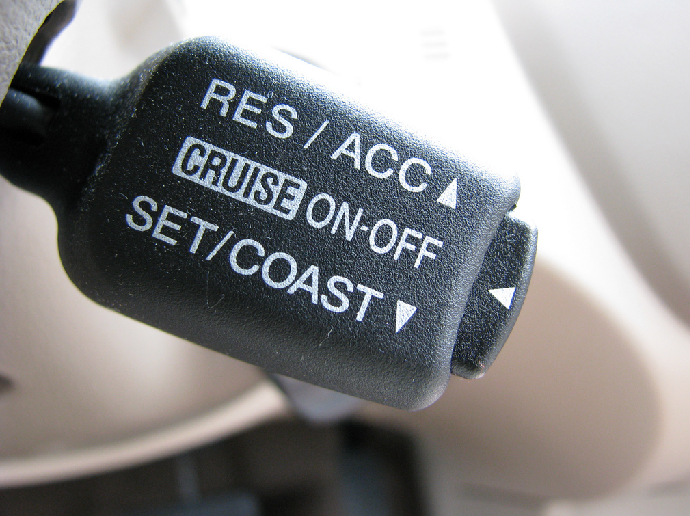
How cruise control works
Cruise control is a convenient, invaluable feature on most modern cars today. Without cruise control, long road trips would be more tiring, for the driver at least, and those of us suffering from lead-foot syndrome would probably get a lot more speeding tickets and be pulled over by traffic police.
Advertisement
The cruise control system controls the speed of your car the same way the driver does - by adjusting the throttle position. But it does so through a cable connected to an actuator, instead of pressing the accelerator pedal directly.
The throttle valve controls the power and speed of the engine by limiting how much air the engine takes in.
Many cars use actuators powered by engine vacuum to open and close the throttle. These systems use a small, electronically-controlled valve to regulate the vacuum in a diaphragm.
The brain of a cruise control system is a small computer that is normally found under the bonnet or behind the dashboard. It connects to the throttle control as well as several sensors.
A good cruise control system accelerates aggressively to the desired speed without overshooting, and then maintains that speed with little deviation no matter how much weight is in the car or how steep the hill you drive up.
The cruise control system controls the speed of the car by adjusting the throttle position, so it needs sensors to tell it the speed and throttle position.
It also needs to monitor the controls so it can tell what the desired speed is and when to disengage.

The most important input is the speed signal; the cruise control system does a lot with this signal, by way of a proportional control system.
In a proportional control system, the cruise control adjusts the throttle proportional to the error, the error being the difference between the desired speed and the actual speed.
So, if the cruise control is set at 60 mph and the car is going 50 mph, the throttle position will be opened quite wide.
When the car is going 55 mph, the throttle position opening will be only half of what it was before. The result is that the closer the car gets to the desired speed, the slower it accelerates.
Also, if you were going down a steep enough hill, the car might not accelerate at all.
Most cruise control systems use a control system known as the Proportional-Integral-Derivative control (PID control).
A PID control system uses these three factors – proportional, integral and derivative factors, calculating each of them individually and adding them up to get the right throttle position.
The integral factor is based on the time integral of the vehicle speed error. In other words, the difference between the distance your car actually travelled and the distance it would have travelled if it were going at the desired speed, calculated over a set period of time.
This factor helps the car deal with hills and also helps it settle into the correct speed and stay there as long as the system is activated.
The third factor, the derivative, simply refers to the speed of acceleration. This factor helps the cruise control respond quickly to changes such as hills.
If the car starts to slow down, the cruise control can see this acceleration (or deceleration) before the speed can actually change much and respond by increasing the throttle position accordingly.
Cruise control is far more common on American-built cars than on European cars because North American roads are generally wider and straighter, and destinations are farther apart.
With traffic continually increasing, basic cruise control is becoming less useful, but instead of becoming obsolete, cruise control systems are adapting to this new reality with the development of adaptive cruise control, which we will be looking at next week.



